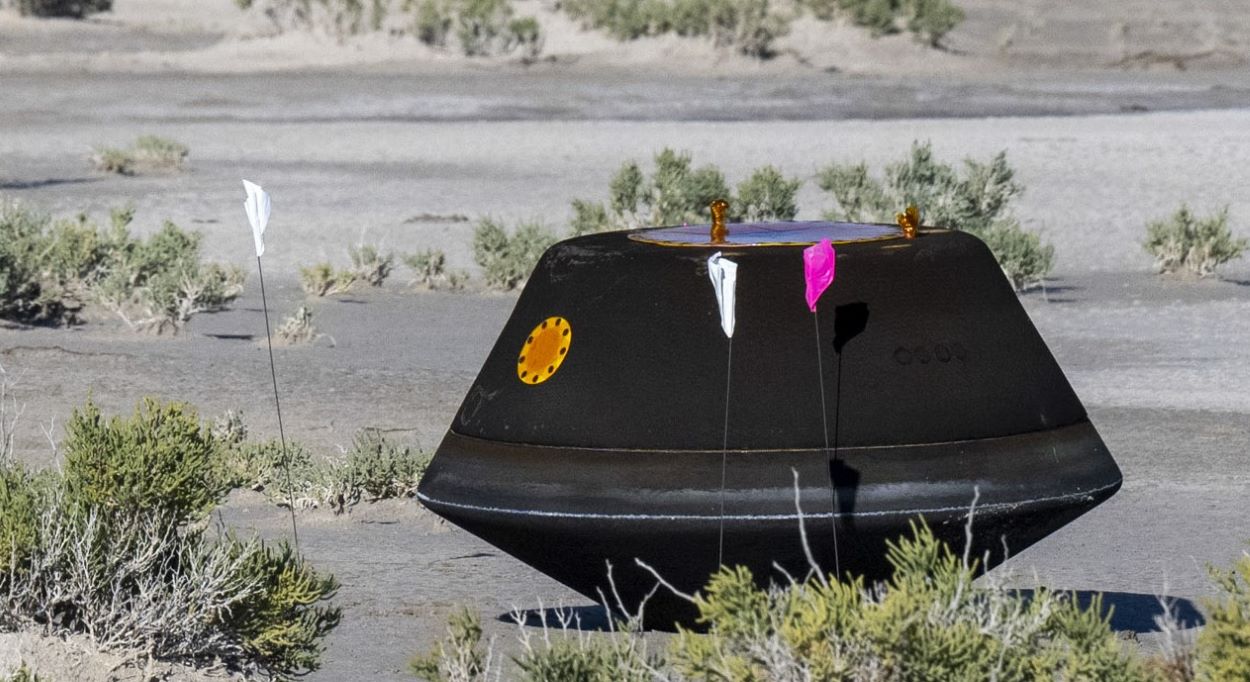NASA anticipates the return of a substantial asteroid sample. The capsule, borne by the spacecraft OSIRIS-REx, will descend to Earth, carving a path through our atmosphere before parachuting into Utah’s desert, bringing its invaluable payload to eager scientists.
At precisely 6:42 a.m. EDT, the spacecraft is set to release its uniquely shaped capsule, which holds approximately a cup of the asteroid’s granulated material. This marks the crescendo of its seven-year interstellar expedition. The targeted landing spot lies within a 250-square-mile expanse west of Salt Lake City, specifically on the expansive Utah Test and Training Range owned by the U.S. military.
The mission, a collaborative venture between NASA and the University of Arizona, stands to become the third successful asteroid sample return. Japan’s space agency holds the prior two honours, achieved in 2010 and 2020. However, what sets this mission apart is the volume of the sample.
Bennu, the carbon-rich asteroid from which the specimen was taken, orbits relatively close to Earth and is deemed a “near-Earth object.” Despite its small size (measuring just a tad wider than the Empire State Building’s height), Bennu offers invaluable insights.
Bennu: A Glimpse Into Cosmic Beginnings
As a preserved piece from the dawn of the solar system, Bennu’s current composition remains largely untouched for approximately 4.5 billion years. This offers a unique opportunity to decipher the early stages and evolution of rocky planets like ours. Moreover, there’s potential for Bennu to house organic molecules akin to those crucial for microbial emergence.
Backing this theory, a Japanese mission named Hayabusa2 retrieved samples from another near-Earth asteroid, Ryugu, in 2020. These samples were discovered to possess organic compounds, suggesting that celestial entities might have given Earth essential life-forming ingredients during its formative period.
Launching in 2016, OSIRIS-REx reached Bennu in 2018. After two years of close observation, it collected its sample in October 2020 and began its homeward journey in May 2021.
The Grand Finale: Capsule’s Earthly Arrival
The capsule’s dramatic re-entry involves soaring through the upper atmosphere at magnitudes faster than sound, heating up to a scorching 5,000 degrees Fahrenheit. However, parachutes will slow its descent as it approaches the Utah desert, ensuring a gentle landing.
Weighing in at 8.8 ounces, this sample greatly exceeds the previously returned specimens. Scientists are optimistic about its purity, hoping for zero contamination during its journey back.
The sample will be carefully transported to NASA’s Johnson Space Center in Houston after successful landing. It will be subdivided and dispatched to researchers across 60 global labs. Meanwhile, OSIRIS-REx will venture forth, setting its sights on yet another near-Earth asteroid named Apophis.
*Additional news input was sourced from Reuters







